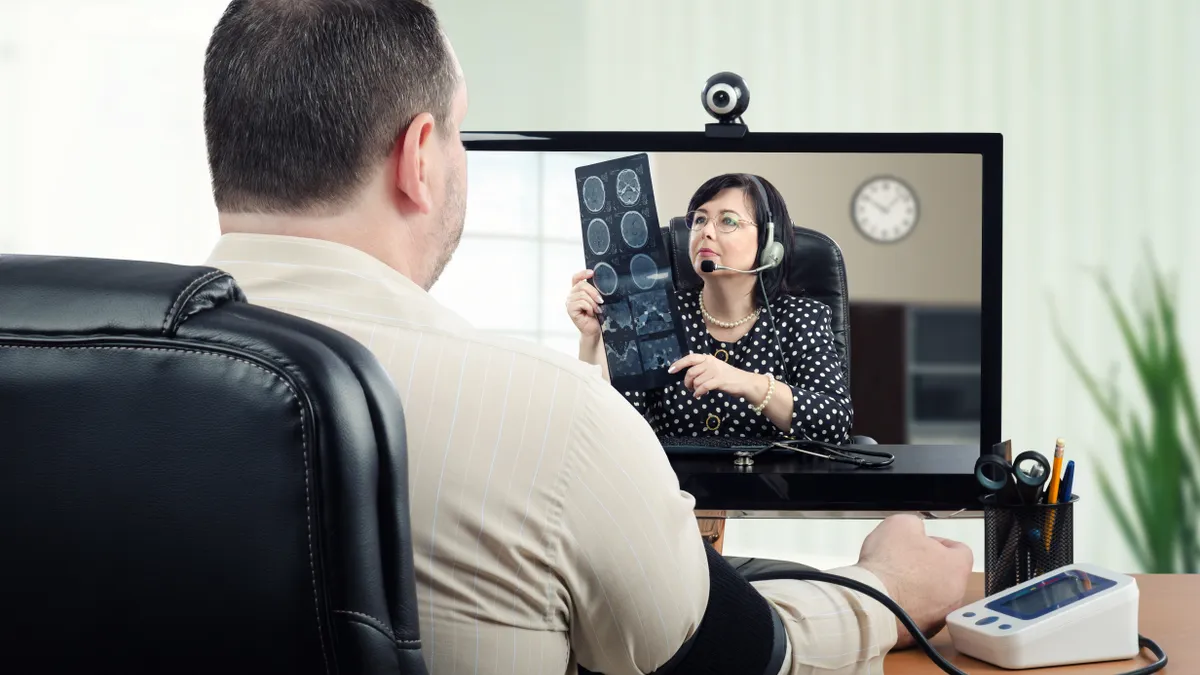Dive Brief:
- The Federal Communications Commission is asking for public comments on a pilot program that would expand delivery of broadband-enabled telehealth services to low-income households. The commission, in a Notice of Inquiry, said it expects to set aside $100 million from the federal Universal Service Fund (USF) to pay for the project. Comments will be accepted from Sept. 10 to Oct. 10.
- FCC said many low-income consumers, especially in rural areas, lack access to affordable or adequate broadband. The Connected Care Pilot Program could be structured to permit up to 20 healthcare providers, serving primarily low-income populations, to partner with a facilities-based broadband provider and apply for a maximum $5 million in funding.
- The commission seeks comment on the proposed structure as well as a list of specifics including program budget, types of telehealth projects to select, eligibility criteria, and which broadband and other communications services and equipment should be supported.
Dive Insight:
Efforts to better manage chronic disease, improve access to specialists, reach patients in remote areas and reduce healthcare costs are among the forces driving interest in the promise of telemedicine. For patients, the convenience of video conferencing with a primary care doctor for minor ailments saves time away from work and school.
Thanks to greater availability of high-speed connectivity, telehealth services such as remote patient monitoring are now being used to address health challenges including diabetes management, pediatric heart disease, opioid dependency, stroke treatment, mental health treatment, high-risk pregnancies and cancer care, FCC said.
A recent study from Avizia, a telehealth technology provider, found that among health systems offering telemedicine, 72% said stroke care was their top use. Utilization also was high for behavioral health (41%) and intensive care (20%).
How widespread digital healthcare delivery becomes remains to be seen. Among the barriers to adoption include the lack of reimbursement, cost to invest in the technology, data security concerns and consumer skepticism or lack of awareness.
The Connected Care Pilot Program builds on other FCC initiatives promoting broadband connectivity between healthcare facilities across the country. The commission’s Rural Health Care Program gives providers discounted telecommunications and broadband internet access services and has supported the deployment of broadband to create networks connecting facilities.
But FCC Commissioner Michael O’Rielly cautioned that the USF must not be used as the “tax collector” for telemedicine. "Having just substantially increased the Rural Health Care Program cap, we must carefully consider the impact of additional spending on the consumers and businesses who would pay extra on their phone bills to support it," O’Rielly said in a statement accompanying the Notice of Inquiry.
The shift to value-based healthcare is accelerating telehealth expansion by creating incentives for new care delivery models that seek to increase access, improve outcomes and reduce costs. FCC cited one estimate that widespread use of remote patient technology and virtual doctor visits could save the American healthcare system $305 billion annually.
In 2017, Congress passed a bill that extends telehealth access to Medicare recipients with chronic conditions and creates incentives for beneficiaries to receive telehealth services through accountable care organizations. Called the Creating High-Quality Results and Outcomes Necessary to Improve Chronic Care Act, the legislation takes effect Jan. 1, 2020.










